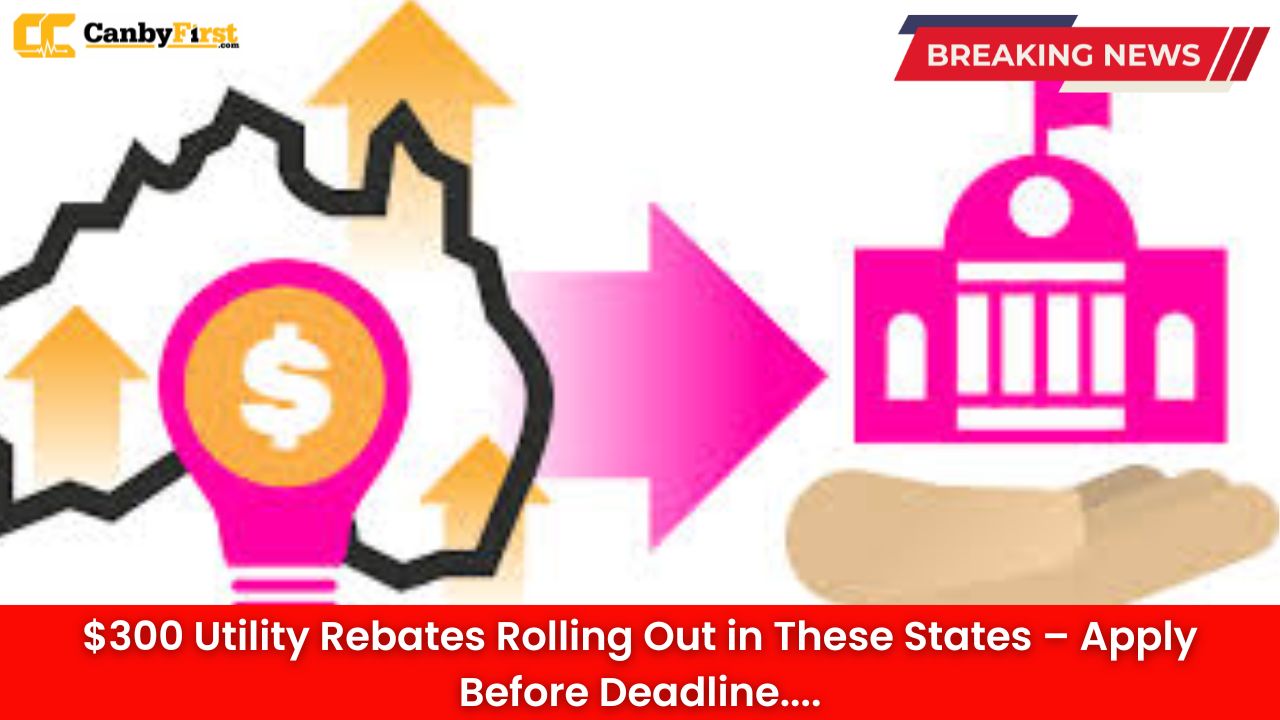New York, US: Households across the United States are set to benefit from new $300 utility rebates as several states begin rolling out relief programs aimed at reducing financial burdens tied to rising energy and utility costs. Eligible residents in these participating states have a limited window of time to apply, with deadlines quickly approaching.
Why the Rebates Are Being Issued
With inflation increasing day-to-day expenses and utility bills straining household budgets, many state governments have stepped in with direct rebate programs. These $300 rebates are designed to help families and individuals cover essential expenses such as electricity, heating, water, and internet bills. Some states are offering them as part of broader energy assistance packages, while others have linked the rebates to income eligibility or participation in existing benefits programs.
States Leading the Rollout
While not all states are participating, several have already confirmed their rollout schedules. Key states offering the $300 utility rebates include:
Also Read
-
California – Targeted at lower to middle-income households, with eligibility based on 2024 tax filings. Rebates are being distributed automatically for those qualifying under state energy assistance criteria.
-
New York – Households enrolled in the Home Energy Assistance Program (HEAP) or Supplemental Nutrition Assistance Program (SNAP) will automatically qualify, with rebate credits applied directly to utility accounts.
-
Texas – Applications are required, with priority given to households meeting income requirements and those in rural or high-energy-cost areas.
-
Illinois and Michigan – Both states are rolling rebates into broader winter heating assistance programs, encouraging households to apply before cold weather peaks.
-
Florida – Limited funding has been allocated, with rebates distributed on a first-come, first-served basis, making early application crucial.
Other states are currently reviewing energy relief measures, and more could announce similar rebates before the end of the year.
Application Process and Deadlines
Each state has outlined its own procedures, though most applications can be completed online or through local utility offices. Common requirements for applying include:
-
Proof of residency within the state
-
Household income documentation such as pay stubs or tax returns
-
Copies of recent utility bills
-
Evidence of enrollment in assistance programs for automatic eligibility
Deadlines vary, but most programs require applications before December 15, 2025, to ensure rebate distribution before the peak winter months. States such as Florida and Texas are urging residents to file much earlier, since funds are capped and could run out ahead of schedule.
Who Qualifies
Eligibility differs from state to state, but generally includes:
-
Families earning below 150–200% of the federal poverty line
-
Individuals already enrolled in public assistance programs (SNAP, Medicaid, HEAP, or TANF)
-
Seniors and people with disabilities
-
Households with children experiencing financial hardship
Some states, like California, are considering automatic rebates for residents who filed income taxes within the income threshold bracket, bypassing the need for additional applications.
How Payments Are Distributed
Distribution methods also vary, with most states crediting the rebate directly to a household’s upcoming utility statement. Others are opting for mailed debit cards or direct bank transfers. In most cases, rebates are expected to arrive within 6–8 weeks of approval.
Why Acting Quickly Matters
Because these rebate programs are state-funded, limited budgets mean only a certain number of applications will be accepted. Early applicants stand to gain the most security, particularly in states like Florida where rebates are prioritized by the order in which they are received.
Experts are also stressing the importance of keeping documentation updated, noting that incomplete or missing paperwork is a primary reason applications get delayed or denied.
The Bigger Picture
Energy relief programs such as this $300 rebate are becoming more common as utilities push for higher rates and households struggle with inflation-driven living costs. Policymakers argue that, although temporary, such rebates provide crucial breathing room for working families during critical seasonal peaks in utility usage and set a precedent for more sustainable long-term energy support.
Final Thoughts
The $300 utility rebate could be a game-changer for thousands of families heading into the colder months, but eligibility rules and short deadlines require fast action. Residents are encouraged to check their state’s official energy or utility assistance programs immediately to ensure they don’t miss out on this limited-time benefit.
FAQs
1. Which states are currently offering the $300 utility rebate?
States including California, New York, Texas, Illinois, Michigan, and Florida have confirmed rollouts, with others expected to follow.
2. Do I need to apply, or is the rebate automatic?
It depends on the state. Some distribute rebates automatically if you qualify, while others require applications.
3. How long will it take to receive the rebate?
Most rebates will be processed within 6–8 weeks after approval or application submission.
4. What documents are required to apply?
Typically, proof of residency, income verification, and recent utility bills are required.
5. Is there a deadline to apply?
Yes, in most states the deadline is December 15, 2025, but states with limited funds may close applications earlier.












